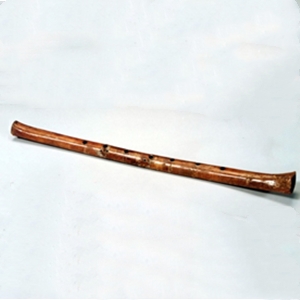Sibusie overview

Sibusi'e (pinyin: sī bù sī é), also translated as Sibuzi'e, Sibis'e, is a Kazakh fringe air-sounding musical instrument, popular in the Xinjiang Uygur Autonomous Region.
The forehead body of Sibusi was originally made of a kind of sturdy reed that grows on the grasslands or in the shady mountains, but now it is mostly made of poplar, pine or yurt. The tube body is generally 50 cm long and 1.5 cm in diameter. The tube body is hollow and has no reed whistle device. There are three or four sound-pressing holes on the body of the tube. The outer wall of the tube is thinned as a mouthpiece at the upper end of the tube, and sheep intestines or strings are tied outside the tube to prevent the tube body from cracking in dry weather and play a protective role.
As early as before the 11th century, the spouses had appeared and spread among the people, and it has been passed down from generation to generation and has been passed down to the present day. The Kazakh people make a living by animal husbandry, and the Sibush is a kind of flute often played by the old pastoral workers.
- type:edge air musical instrument
- translate:Spuzzie, Sbisbee
- Pinyin:sī bù sī é
- popular area:Xinjiang Uygur Autonomous Region
- nationality:Kazakh
overview of other similar instruments
- sanyanxiao overview
- Daguangxian overview
- Leiqin overview
- hahao overview
- yandundagu overview
- Han Xiaozheng overview
- Fang Xiang overview
- guanzi overview
- zhuqin (Dao Qin) overview
- zhuiqin overview
- bangzi overview
- three-stringed piano overview
- Gehu overview
- xiao overview
- xiaokonghou overview
- Konghou overview
- Sheng overview
- suona overview
- hulusi overview
- gushao overview
 渝公网安备 50010702504639号
渝公网安备 50010702504639号